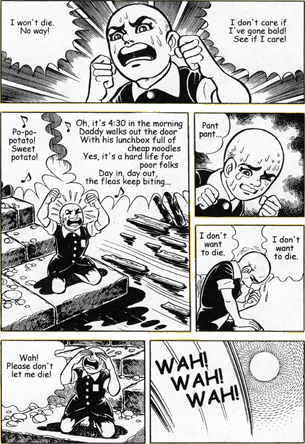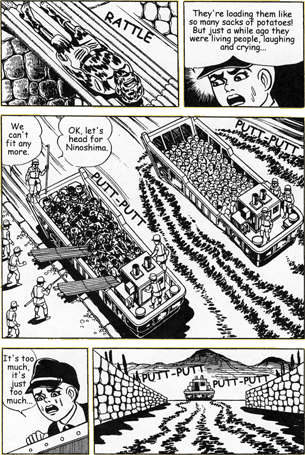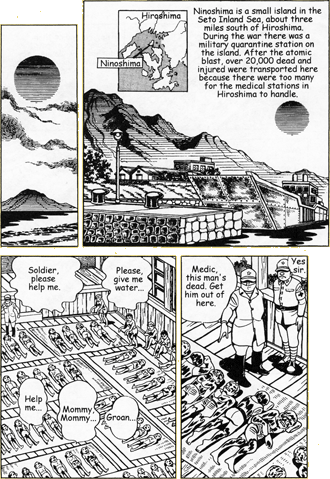
War through the Eyes of Children
With the Help of Barefoot Gen
The Atomic Bombing2
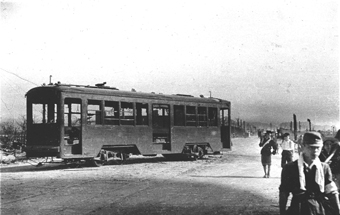
Streetcar blown by the blast
This photo of a streetcar was taken toward south from Chugoku Power Distribution Company (now, Chugoku Electric Power Co., Inc.) in Ko-machi, Naka-ku, approximately 730 meters from the hypocenter. Even the heavy streetcar had been blown by the blast off its track onto the road.
August 9, 1945 Chugoku Power Distribution Company Ko-machi
Photo by Mitsugi Kishida Courtesy of Teppei Kishida
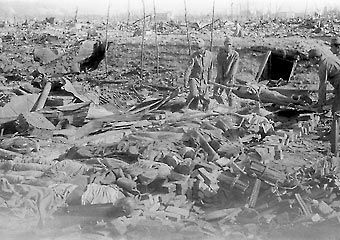
Cremating bodies in the burnt-out ruins
This is a makeshift crematory, approximately 740 meters from the hypocenter, established on the south side of Hatchobori Fukuya Department Store. As the disposal of bodies that had accumulated in huge numbers became extremely difficult, bodies were cremated everywhere in the burnt-out ruins in the city.
August 9 to 12, 1945 Horikawa-cho
Photo by Hajime Miyatake Courtesy of Asahi Shimbun
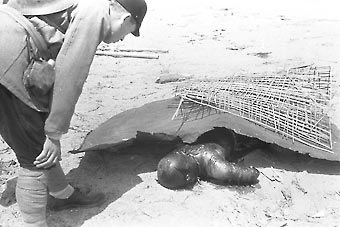
Body that was pulled out of the river
This body was placed in a temporary crematory on the bank near the east end of Sumiyoshi Bridge, approximately 1,360 meters from the hypocenter. Many people who had run from the approaching fire into the river used up all their strength and were washed away by the river to their deaths. This body seems to have drifted to Sumiyoshi Bridge and pulled up to dry land.
August 9 to 12, 1945 Kako-machi (now, Sumiyoshi-cho)
Photo by Hajime Miyatake Courtesy of Asahi Shimbun
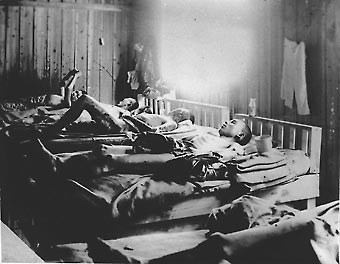
First-aid station in the Ninoshima Quarantine Station
After the bombing, injured people in Hiroshima City were transferred to Ninoshima Island one after another by ship. The troops and islanders dedicated themselves to relief activities in quarantine stations and temples there. With many people dying one after another, cremations continued day after day.
Around August 7 to 20, 1945 Ninoshima-cho
Photo by Army Marine Headquarters Donated by Keisuke Misonoo
Buckle
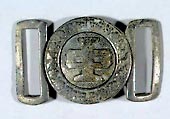 Masakazu Okitsu (then, 12), who was a first-year student of Second Hiroshima Prefectural Junior High School, was exposed to the bomb at his building demolition work site in Nakajima-shin-machi (now, Nakajima-cho), approximately 600 meters from the hypocenter. His parents, who were exposed at home in Hakushima-kita-machi, looked for Masakazu in vain. One month after the bombing, they were informed that Masakazu’s name had been on the list of the dead at the City Office. They visited the City Office and received the ashes and mementos of Masakazu, who had been cremated on Ninoshima Island.
Masakazu Okitsu (then, 12), who was a first-year student of Second Hiroshima Prefectural Junior High School, was exposed to the bomb at his building demolition work site in Nakajima-shin-machi (now, Nakajima-cho), approximately 600 meters from the hypocenter. His parents, who were exposed at home in Hakushima-kita-machi, looked for Masakazu in vain. One month after the bombing, they were informed that Masakazu’s name had been on the list of the dead at the City Office. They visited the City Office and received the ashes and mementos of Masakazu, who had been cremated on Ninoshima Island.
Donated by Toshiko Yamada
After wandering through the heap of rubble that Hiroshima had become, Gen made his way to Ninoshima Island, where thousands of injured had been transported.
From Barefoot Gen-The Day After, Last Gasp of San Francisco, 2004, translated by Project Gen
